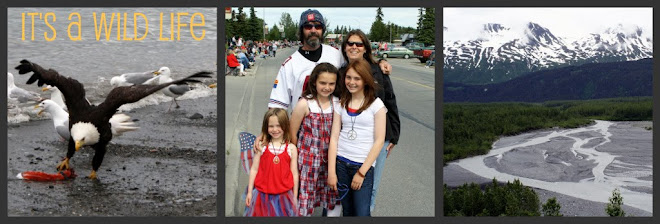
On Saturday July 7th 2007 Cori and Cassi had the opportunity to speak with Astronaut Clayton C. Anderson from the International Space Station. It was an incredible experience and there was a lot of time for interaction with him.
While Uncle Mark and Aunt Jeanie were visiting we heard that we would have this opportunity so we asked for their help coming up with some questions to ask Mr. Anderson. Unfortunately I sent them in a little late. While it happened that their questions were asked, it did not turn out that the girls got to ask their questions themselves. Some of them were asked by other children.
Cori said to him "I heard that the Great Wall of China is visible from space. Are there any other man made or natural features that you have seen from the space station?
She also asked If there had ever been a female commander or leader of a mission into space, which was a question we personally sent in.
Scott and I thought Cassi was given a fantastic question to ask which was, What's sleeping like in space when there is no gravity to hold you or your sheets down?
It turns out they sleep in sleeping bags standing up. Who knew?
She also asked him "How is the digestive process affected by the lack of gravity?" This and his answer got a little chuckle from all of us.
Since there was a little extra time Cori came up with the idea of asking "Is there any special candy you like to take with you to the space station?" It would have made a great commercial for Kit Kat because apparently that is his candy bar of choice.
While we were quite aware of the opportunity the event provided the girls it got even better this morning. The phone started ringing pretty early with the news that there was a photo of the girls on the front page of the newspaper. They were both very excited and loved the spotlight it created. Go figure.
I am putting the actual Peninsula Clarion Article here along with the front page photo. We do have a little video Scott shot and if we can figure out how to put it on DVD we will send a copy soon.
By the way, Did you know both Cori and Cassi might possibly be astronauts someday? Amazing what some opportunities inspire isn't it? Love you all bunches!

The International Space Station zipped over the southern Aleutians at 17,500 miles per hour, coming within range of the
"NAISS coming in loud and clear," NASA Ast
Nearly a dozen kids lined up at the radio's microphone to ask
"
Last year the learning center contacted Expedition 13 Flight Engineer Jeffrey Williams and had a short question and answer session with him, but it wasn't sanctioned by NASA, Eskelin said.
"Our last contact was at 5:30 in the morning," Eskelin said. The space station has to be high enough above the horizon in order for the
Hershberger, a volunteer at the Challenger Learning Center and ham radio operator for more than 30 years, said because the station's orbit only comes to within 51 degrees north and south latitude that it would only be 13 degrees above the horizon when the center is able to contact it.
"When he comes out over the southern end of the Aleutian chain then we'll have the footprint," Hershberger said. "At best we can have 13 degree elevation."
At 210 miles above the Earth's surface and traveling a steady clip of 17,500 miles per hour, the space station's orbit doesn't change, Hershberger said. Last year's contact was early in the morning because the planet moves all the time, he said.
When
"Do you believe in life on other planets?" Hanson asked.
"I liked it all," Hanson said, standing in the lobby with his family following the event. "It was neat asking questions and looking at the chart."
Hanson said he builds airplanes, rockets, cars and submarines and wants to be an aerospace engineer when he grows up. Learning that there is a small window of opportunity when it comes to talking to an ast
"I learned there are certain places where he can come in and out so you can talk to each other,"
For Cori Holmes, 9, and Emily Hamilton, 8, talking to someone floating in outer space was exciting. Hamilton and Holmes asked
"Getting to know the things he likes to do and the things he likes was cool," they said. "It took 40 to 45 minutes (for him) to get around the world so we could talk to him."
In addition to talking to
"Your body knows when it's time to go," he said.
Jessica Cejnar

No comments:
Post a Comment